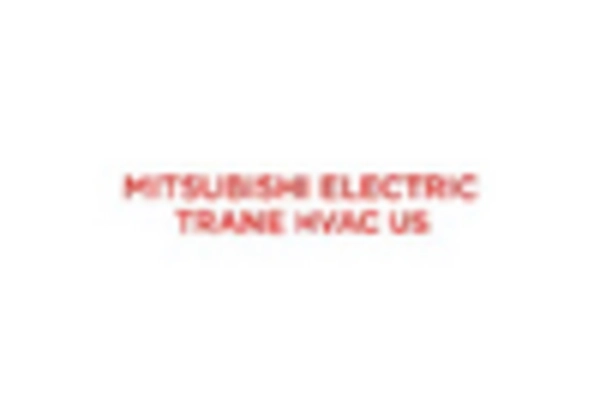Expansion of Industrial Automation
The ongoing expansion of industrial automation is significantly influencing The Global Power Semiconductor Industry. As industries increasingly adopt automation technologies, the need for reliable and efficient power management solutions becomes paramount. In 2025, the industrial automation sector is expected to witness a robust growth rate, with power semiconductors playing a crucial role in driving efficiency and reducing operational costs. The integration of power semiconductors in robotics, control systems, and machinery enhances performance and energy efficiency. This trend indicates a shift towards smart manufacturing, where power semiconductors are integral to optimizing processes and improving productivity, thereby propelling the market forward.
Growth in Renewable Energy Sources
The transition towards renewable energy sources is a significant driver for The Global Power Semiconductor Industry. As nations strive to reduce carbon emissions and enhance energy sustainability, the adoption of solar, wind, and other renewable technologies is accelerating. In 2025, investments in renewable energy infrastructure are projected to increase, leading to a heightened demand for power semiconductors that facilitate energy conversion and management. Power semiconductors are essential in inverters and converters used in renewable energy systems, ensuring efficient energy transfer. This growth not only supports environmental goals but also positions power semiconductors as critical components in the evolving energy landscape.
Emergence of Smart Grid Technologies
The emergence of smart grid technologies is reshaping The Global Power Semiconductor Industry. As energy distribution systems evolve, the need for efficient power management solutions becomes increasingly critical. In 2025, the implementation of smart grid technologies is expected to accelerate, driven by the demand for improved energy efficiency and reliability. Power semiconductors are integral to smart grid applications, facilitating real-time monitoring and control of energy flows. This trend indicates a shift towards more resilient and responsive energy systems, where power semiconductors play a key role in enhancing grid stability and integrating renewable energy sources. The growth of smart grid technologies is likely to propel the demand for power semiconductors, further solidifying their importance in the energy sector.
Surge in Consumer Electronics Demand
The increasing demand for consumer electronics is a pivotal driver for The Global Power Semiconductor Industry. As technology advances, devices such as smartphones, tablets, and laptops require more efficient power management solutions. In 2025, the consumer electronics sector is projected to account for a substantial share of the power semiconductor market, driven by innovations in energy-efficient designs. The proliferation of smart home devices and wearables further amplifies this trend, necessitating advanced power management systems. This surge in demand not only enhances the performance of electronic devices but also contributes to the overall growth of the power semiconductor market, as manufacturers seek to integrate more sophisticated semiconductor solutions to meet consumer expectations.
Advancements in Electric Vehicle Technology
The advancements in electric vehicle technology are driving transformative changes in The Global Power Semiconductor Industry. As electric vehicles gain traction, the demand for high-performance power semiconductors is surging. In 2025, the electric vehicle market is anticipated to expand significantly, with power semiconductors playing a vital role in enhancing battery management systems and electric drivetrains. These semiconductors are crucial for improving energy efficiency and performance, thereby addressing consumer concerns regarding range and charging times. The integration of advanced power semiconductor technologies in electric vehicles not only supports the automotive industry's shift towards electrification but also contributes to the overall growth of the power semiconductor market.












Leave a Comment